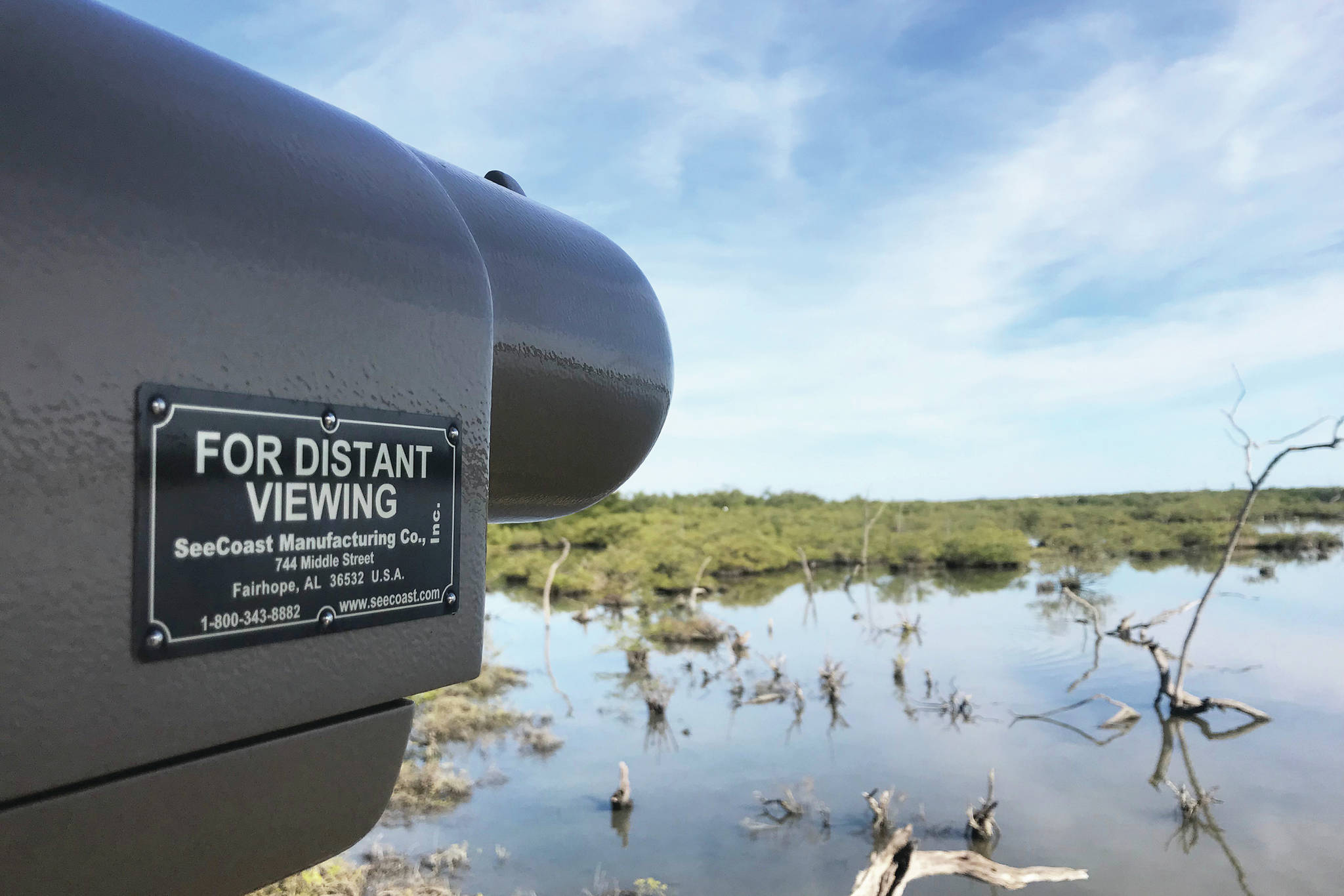The Pelican Island National Wildlife Refuge isn’t quiet.
When I ran through the Kenai Wildlife Refuge in November, the only thing I heard was crunching of the frosty leaves and the sound of my breath. In Florida, at the Pelican Island National Wildlife Refuge, there is a catalogue of sound.
Unfortunately, from the three mile loop of trail near my grandmother’s house, I could still hear the highway beeps here and there, but those are quickly drowned out or dissipated.
They are interspersed between the flapping of pelican wings, a symphony of calls from other birds and splashes as they continuously dive into the placid wetlands.
Pelican Island is the first of the nation’s wildlife refuges, signed into existence by a soft spoken man with a big stick, President Teddy Roosevelt, but initiated by a German immigrant who just really liked to watch pelicans.
Paul Kroegel lived on the west bank of Indian River Lagoon and was worried about the pelican population being depleted by people hunting them for feathers that made their hats prettier, so he would stand guard on the island, shotgun in hand, to protect the birds.
Eventually, an ornothologist came out and realized the island was one of the last rookeries for Brown pelicans on the eastern coast of Florida. This was brought up to Roosevelt, a huge fan of conservation, and an executive order was signed. Roosevelt designated the land as a federal bird reservation, marking the first time the federal government put land aside for the sake of wildlife.
I ran around the three mile loop in the refuge, stopping to read all of the signs and take in the sights. It was exciting, to be in a refuge so different from the one I had come to love.
The heat and humidity got to me quickly, and the soft, sandy ground slowed me down, but I was happy to be able to explore.
I found a boardwalk, leading up to an observation area. I was too early for the golden hour, when the sun is setting and all the pelicans return to the island, but I was just in time to take a nationwide trip.
Across each board leading up to the observation deck is the name of a different national wildlife refuge. Dating back to Pelican Island, you can see all the unique places that are protected in this country.
I came across a cluster of Alaska refuges, created in 1980 and was baffled when I realized Kenai National Wildlife Refuge wasn’t among them.
It turns out that the refuge was created in 1941 as the Kenai National Moose Range, because the refuge’s story rests on the back of the big game.
After a hunt in the late 1800’s in the Tustemena Lake region, word spread of a new territory with large moose and white sheep. Good news travels fast, and the area felt the impact of unregulated hunting quickly.
One big game hunter, Harry E. Lee, who travelled to the Kenai in 1899 had a successful hunt, but wrote about some of the issues he saw.
“I would like to suggest that the American sportsmen should by all means try to secure this tract of land from the Government as a game preserve, and I hope someone will take the matter in hand before another year, for the game is wantonly killed by market hunters every winter, and if this is not soon put a stop to, it will be entirely exterminated,” Lee wrote in a magazine, according to the refuge.
The traveling word shifted from “there is good hunting,” to “we must protect this good hunting,” and reached all the way to Washington D.C., starting a new chain of events that led to the other President Roosevelt, FDR, signing legislation to create the Kenai National Moose Range in 1941.
It turns out, no refuge is quiet, they’re all full of stories to hear.


